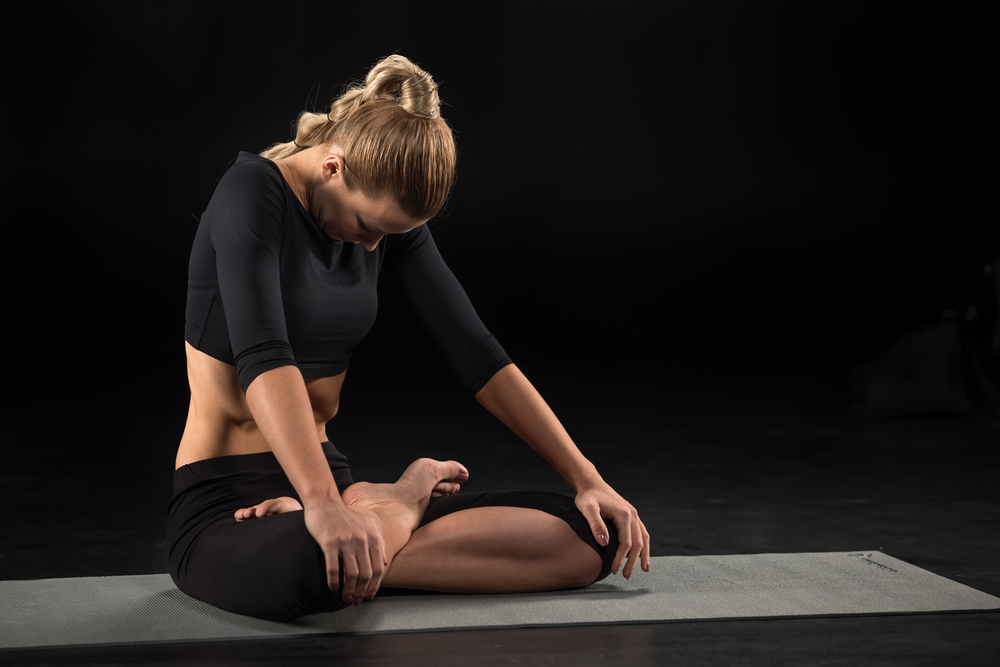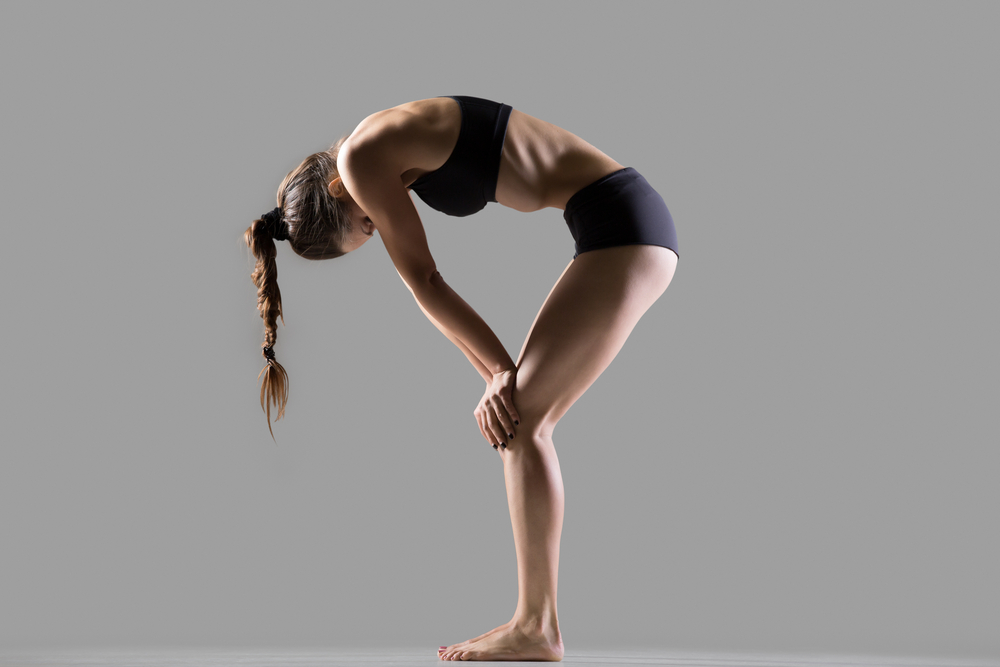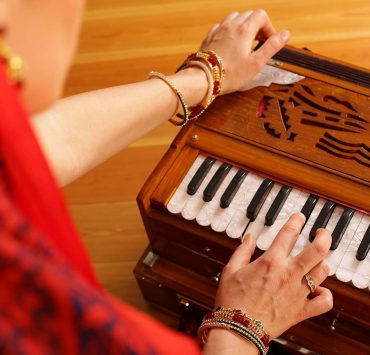
Meditation coach Emma Morrison is the go-to person for those…
The Mula Bandha or root lock is an important yogic practice. The Sanskrit word “Mula” refers to root, like that of a plant or tree. Like in English, root can also mean foot or base. It can also refer to the origin of a thing.
In yoga, Mula indicates the base of the torso, the perineum. It is associated with the Muladhara Chakra, the lowest energy center along the spine.
The word “Bandha” has many different meanings. But some are of those meanings are contradictory to one another. It has been translated as “fetter, block, check, obstruct, restrain, or lock.” In this way, Bandha can describe the damming of a river.
Alternatively, Bandha can also mean “bond, connect, put together, unite, combine, or join.” In this way, Bandha is described as a bridge above the river.
While practicing your Mula Bandha, you will find that both of these translations are true.
Why Practice Mula Bandha – Root Lock?

Mula Bandha helps you learn how to channel energy throughout your entire body. If you are familiar with the chakras, then you know that Mula Bandha impacts the Root Chakra. When you learn to positively connect to this chakra, you’ll feel and embody a wholesome self-image.
The Mula Bandha is said to cut through Brahma Granthi, the energetic knot of our resistance to change.
On a physical level, the Mula Bandha supports the musculature of the pelvis. It increases stability in the pelvis and thus for the entire spinal cord. As the Mula Bandha strengthens, it teaches the importance of a solid foundation. It also lifts and compresses the bowels and lower abdomen.
This solid foundation is the platform under your breath. It makes it possible to increase or decrease pressure inside the torso. This ultimately helps to facilitate movement.
Practicing Mula Bandha can create lightness and fluidity when properly applied.
You will start to feel less earth-bound and more mobile.
Through gradual refinement, the Mula Bandha becomes less muscular and more subtle. It can feel more energetic and etheric as well.
A basic pattern in yoga is movement from the outside to the inside. This pattern often leads to a yogic awakening. This can also be seen as moving from the mundane to the rarefied. Or from unconsciousness to enlightenment.
On an energetic level, the Mula Bandha allows us to feel, restrain, and direct our energies. This way, we can direct all of our focus towards enlightenment.
The 3 Bandhas
The Mula Bandha is extremely important. But there are two other Bandhas as well. By mastering all three of these locks, one can completely control the body.
This will help to build strength in the main energy channels.
The three bandha’s can help you control your internal systems. Once you have mastered that, you can tackle more difficult yoga positions.
Uddiyana Bandha – Rise Up

Uddiyana is another Sanskrit word that means “rise.” The movement of the Uddiyana is very much linked to moving energy through the abdominal area. Unlike Mula Bandha, Uddiyana is known as the “abdominal lock.”
Practicing Uddiyana Bandha is great for strengthening core muscles.
It energizes the third chakra (Manipura) which is located above the navel. This is where the center of power is located in the body. This area is also known to radiate peacefulness.
Jalandhara Bandha – Throat Lock

The last Bandha is Jalandhara which is also known as the “Throat Lock.” Practicing Jalandhara Bandha brings awareness and flexibility to the neck muscles. It is great for those who build up tension in these areas.
Practicing Jalandhara Bandha energizes the fifth chakra (Vishuddha).
This chakra helps us better connect to ourselves. It is also known to come with reason and logic.

On a physical level, Mula Bandha consists of a contraction. It is the muscular lifting-up of the pelvis floor. The pelvis is a primarily bony structure. But the pelvic floor consists of muscles fibers and fascia, or connective tissues.
It can be difficult to isolate the contractions in this area. But developing an awareness of Mula Bandha is a matter of daily practice.
This practice should not be rushed. Instead, it should be worked slowly and gradually.
This will allow the muscle to strengthen over time. Similarly during this process, one’s mental discrimination is also developing.
An obstacle to practicing Mula Bandha is that all muscles of the perineum tend to work together. Frequently, when one contracts, they all contract. It is easy to inadvertently tense the respiratory muscles with the perineal muscles. This makes for an unnecessary sympathetic tension in other areas of the body.
To help you practice Mula Bandha, we’ve developed a couple of steps for you to follow.
Step 1
First, develop the simple ability to contract and relax the perineal muscles. Begin seated in a meditative posture with a straight spine. Preferably, your legs will be crossed and in a seated pose.
Close your eyes and rest your body. Relax your breath and feel the sides of your rib cage expand and contract. Let this movement release tension from your upper abdomen. Breath freely and without coordinating your breath with muscle contractions.
Then squeeze the entire perineal region inward and upward. Keep your breathing as steady and smooth as possible without pausing. Press in slowly. When the contraction is complete, release slowly.
In this step, you are not trying to discriminate between individual areas. Instead, you are working to strengthen all of the muscles of the perineal region.
This will increase your overall awareness of the subtle muscles in your perineum.
Repeat this step 25 times and become familiar with these muscles.
Step 2
Contract the muscles of the perineum and hold them comfortably. While you maintain tension, continue breathing slowly and smoothly. Begin to sense the area around the anus. Move to a central contraction at the perineal body or cervix.
Finally, examine the contraction in your urogenital area. Tighten each area as you focus on feeling these sensations. Then release the entire contraction slowly and relax.
Step 3
Now, coordinate your contractions of the entire perineum with your breath. When you inhale, contract the perineum. When you exhale, release any tension. Time your contractions so that they coincide with your breath. Any jerkiness or loss of control will gradually reduce over time.
During your practice, focus on the central region of your perineum.
Give special attention to the sensations associated with Mula Bandha.
Repeat this step 25 times and start to identify the sensations of these regions.
Step 4
When you’re ready, focus your attention on the center of your perineum. Contract your muscles tightly with minimal involvement of the anal or urogenital areas.
The initial version of Mula Bandha will take time to accomplish. But remember that there is no hurry.
It is better to prolong the practice than to rush it.
Step 5
Soon you will be able to hold the contraction without affecting your breath. When you can do this, the other sympathetic muscle tensions will relax too. You will be able to comfortably hold Mula Bandha for some time. It can be employed during pranayama exercises and meditation.
Benefits of Mula Bandha

It is often difficult to isolate the contractions in the perineal muscles. This is why developing an awareness of the Mula Bandha is a daily practice. And there are a variety of physical benefits attributed to the Mula Bandha.
Practicing Mula Bandha can regulate unstable menstrual periods and lower your respiration rate. It can also reduce your heart rate and blood pressure. Other benefits include calming your sympathetic arousal and improving your digestion. A strong Mula Bandha can also harmonize your urogenital functioning.
But practicing Mula Bandha is more important for yogis. One can redirect the downward moving energies from the Root Chakra. They can also redirect the upward-moving energies from the Heart Chakra.
Through this practice, one can direct down-ward moving energies from the Root Chakra and upward-moving energies from the Heart Chakra.
It is said that this practice reverses these energies and unites them. This internal union leads to an expansion of awareness.
With regular practice, one can become more certain of where muscle contractions converge.
The energy of the Root Chakra is said to permeate the human body and mind. When that energy is calm and secure, life can feel more relaxed. Similarly, the Mula Bandha can center the body. It is a great way to learn how to ground down. This practice can help us remain stable, steady, and well balanced in our daily lives.
Channeling Mula Bandha can strengthen the core as well. This makes it easier to remain centered and balanced throughout the day. When the body is properly centered, this helps to prevent future injuries too.
Mula Bandha supports internal health. It protects the inner organs and supports and helps relax the pelvic floor. Mula Bandha can also quicken the healing process after childbirth.
A strong Mula Bandha can keep the uterus and cervix aligned. This will help to give you more energy. More than anything, Mula Bandha teaches you to channel your energy and internal heat. This will help connect and unite your entire being.
Mula Bandha also aids in digestive benefits. Your practice can help cleanse the intestine and pelvis organs. This will leave you feeling energized and refreshed. You can also improve the functions of the uterus, lower intestine, and rectum.
Final Thoughts on Mula Bandha

Refinement of this practice can become integrated into the body and mind. When Bandha bears deeper into the psyche, it permeates your whole life.
Mula Bandha purifies the pranamaya kosha. This is one of the subtle 5-layered sheaths of the energetic body.
On a pranic level, Mula Bandha redirects the energy of apana. Apana is an aspect of prana within the body that naturally flows downward from the navel. Redirecting apana energy upwards joins it with the natural upward movement of prana.
This communion can better lead to enlightenment.
Redirecting tremendous amounts of energy can lead to higher levels of consciousness. This way, we do not allow mundane concerns to stand in the way of our divine aspirations.
Applying Mula Bandha means binding normally outgoing senses inward. Normally, we look outside ourselves for happiness. But the bliss we find outside of ourselves is only temporary.
Instead, Mula Bandha focuses on pratyahara, the inward withdrawal of the senses.
This lets us see past our outer differences to behold the inner essence of all things.
When we restrain our outward gaze to enhance the unitive vision of yoga, we open the third eye. We cultivate our insight and intuition. We need to have faith and dedicate our efforts to serve those needs. This will end the suffering of all sentient beings.
Mula Bandha encourages us to perceive inner sameness. It draws us away from focusing on our differences. This quality exists within us all.
What's Your Reaction?
Meditation coach Emma Morrison is the go-to person for those living in Salt Lake City, Utah, who need to release stress and tension or simply dive deeper into their meditation practice. In her writing, you’ll receive useful information on how to live a more fulfilling life.














